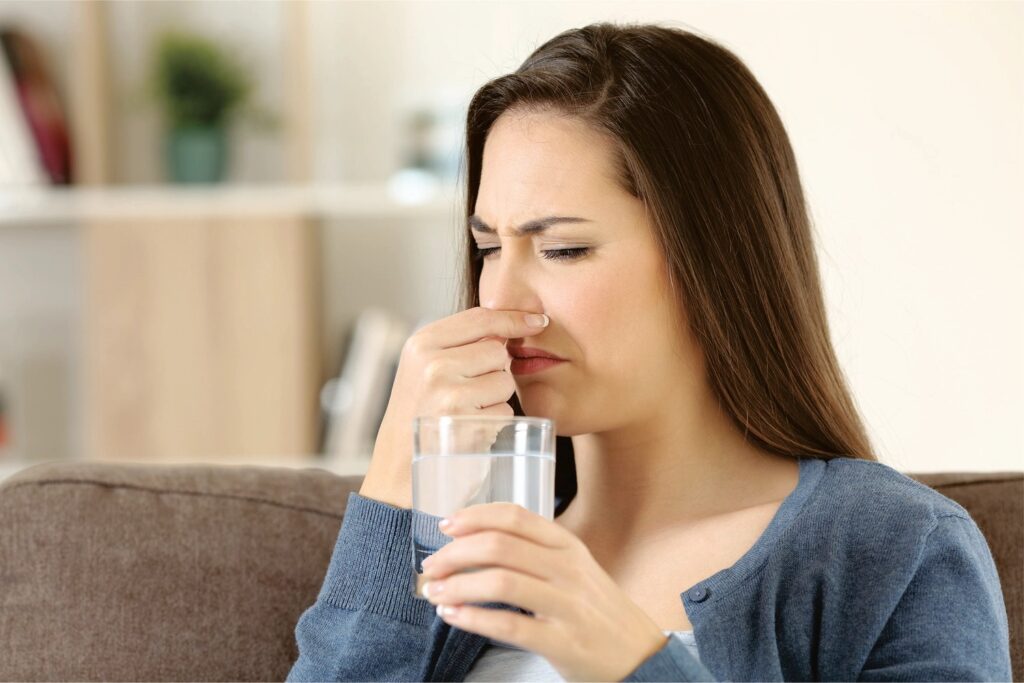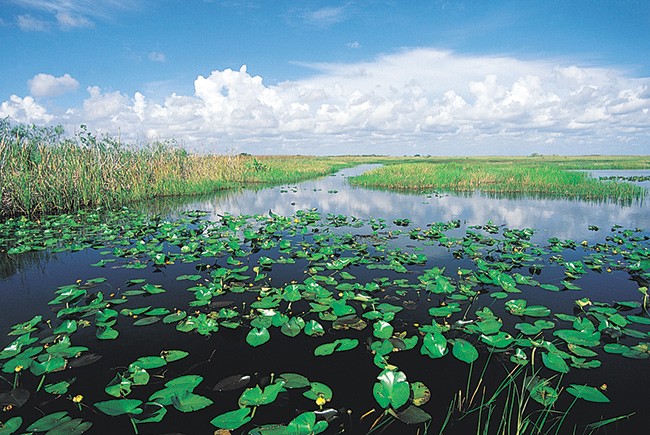Florida has had an extremely traumatic past when it is concerned with the water. Significantly, the drinking water. With regards to drinking Florida’s tap water, you may have your doubts concerning the safety. You may have also considered the possibility of having spring water or the purified bottled water instead of the tap water in Florida.
The claims made by the state and federal regulators of the United States of America are that the water, when released by the source, is very safe to be consumed. However, the chances of you being dicey about are very high cause no one wants something lurking around in the water they drink.
But you have nothing to say about it because the tap water in Florida is actually pretty safe to consume. Moreover, as per the law passed by the Florida Department of Environmental Protection, “all chemicals added to drinking water and all system components that come in contact with drinking water be certified under ANSI/NSF Standards 60 and 61. These standards ensure that there are no harmful chemicals inadvertently added to the drinking water supply.”
Although the water in Florida is considered safe to drink, some components are still considered unsafe. Florida tap water is viewed as safe to drink since the containment levels are very low and way below the legal limits.
Be that as it may, arsenic, copper, lead, and trihalomethanes are a significant concern and have been recorded at dangerous levels in a few cities in Florida.
The tap water in Florida differs depending upon where you live and where your water comes from, and even what your lines are made of.
Is the Tap Water in Florida Safe to Drink?

Florida tap water is actually extremely safe to drink if the contaminants in the water are beneath the concentration levels that the Environmental Protection Agency (EPA) sets in accordance with the legislation.
While the local area and public water systems in Florida give a valiant effort to treat the water and eliminate pollutants, some stay in the system, though.
The Contaminants that are the Biggest Worry in Florida are:
- Arsenic
- Coliforms
- Disinfectants
- Disinfection Byproducts
- Radioactive Components
- Inorganic Components
- Copper & Lead
- Trihalomethanes (THMs)
- Other Contaminants
Arsenic: According to the Environmental Working Group (EWG), arsenic is a known toxic pollutant. But in reality, arsenic is also a naturally occurring element that is found in rocks and is only toxic at high levels.
The EPA says that arsenic can make its way into our water supply from the natural erosion of rocks.
Most of Florida’s tap water comes from groundwater, which means arsenic from the surrounding rocks also comes along.
But, the arsenic levels in the tap water in Florida are very low, making it safe to be consumed.
Coliforms: As per the 2020 report, there have been no evident traces of destructive biological substances, for example, Cryptosporidium or Giardia, found in the source water for the treatment plants of the WASD. These levels are satisfactory per EPA guidelines.
Disinfectants: The 2020 report referred to chloramines at levels of 2.5 ppm in principle, which is within the Maximum Disinfectant Residual Level Goal (MDRLG) of 4 ppm, a satisfactory level. The amount of chlorine was recorded as Not Applicable (N/A) in the system, as chloramine is regularly added.
Disinfection Byproducts: The WASD tests for trihalomethanes and haloacetic acids, side-effects of water disinfection substances. In the latest report, it was discovered that the levels of these mixtures are supposed to be 60 (out of an 80 Maximum Contaminant Level [MCL]) and 39 (out of 60 MCL) ppb individually within an adequate EPA level.
Radioactive Components: The 2020 WASD report specifies that Radon-222 (radon) has been found in Miami’s tap water at 193 picoCuries per Liter (pCi/L). Radon is a no-fragrance, vapid gas which is known to cause a cellular breakdown in the lungs — and can be in water or airborne.
In spite of the fact that there is no EPA-set-up MCL for radon, the data from a 2013 European Union report proposes that a parametric worth of 100 Becquerels for every Liter (Bq/L, or 2,702 pCi/L) ought to be adapted. The Miami tap water radon is of 193 pCi/L and adds up to 7.14 Bq/L.
All things considered, the U.S.- based Centers for Disease Control and Prevention (CDC) specifies that 30 to 1,800 deaths have been recorded on an average every year that were caused due to drinking water that contained traces of radon.
Inorganic Components: The reports for inorganic foreign substances like arsenic, barium, antimony, chromium, copper, lead, manganese, nitrates, nitrites, selenium, and sodium. These toxins — then aftereffects of erosion, plumbing, farming, and electrical energy exercises — were within the adequate levels.
Copper and Lead: Copper and lead are one of the major issues in Florida’s water supply. Truth be told, these metals are found in abundance in Floridan homes. The EPA says the primary sources of copper and lead in Florida’s tap water are the corrosion of home plumbing systems and erosion of the natural deposits.
The city’s water systems eliminate any copper or lead found in the water supply.
Be that as it may, it can get pollutants from whatever it moves through when the water leaves the system. And because Florida’s home plumbing contains copper and lead, your own lines could be making your tap water a source of lead and copper – and you would not know it!
Trihalomethanes (THMs): Trihalomethanes are a side-effect of drinking water disinfectant. What does that really mean? – It implies that the chlorine (or chloramine) used by water systems to clean our drinking water can constitute of natural substances that form trihalomethanes.
Shockingly, ingestion of trihalomethanes in your water can put your health in danger. However, the amount of Trihalomethane present in Florida’s tap water is negligible and below the legal limit. Therefore, making the tap water in Florida safe for consumption.
Other Contaminants: The WASD likewise has performed tests for perfluorooctane sulfonate, perfluorooctanoic acids (PFAs/PFOAs), and oxamyl — the aftereffects of artificial pesticides, chemicals, and runoffs.
Traces of oxamyl have been found to be within the adequate levels, and the perfluorooctanoic substances have been found to be at 31 and 11 ppt — which again is under the EPA’s limit of 70 ppt.
Why Does Florida’s Tap Water Taste Bad?

The tap water in Florida can taste or smell really foul due to the toxins present in the water. Chlorine, metals, and sulfate are answerable for the terrible smells and tastes in the Florida water.
Even though Florida tap water will taste, smell, and look different relying upon where you are, a few common issues include:
The water smells like rotten food (mostly eggs)
Pungent taste
A metallic taste
On the off chance that your water tastes awful – the possibility of it tasting that way are:
Chloride: Salty
Chloramine: Salty
Copper: Metallic
Iron: Metallic
Manganese: Bitter, Metallic
pH – Low (<6.5): Bitter, Metallic
pH – High (>8.5): Soda-like
Zinc: MetallicSulfate: Rotten egg or smelly
However, if the tap water looks different or unusual, the reasons for it are:
- Dissolved organic substances
- Excessive use of disinfectant agents (e.g., chlorine)
- Metals
- Improper water treatment
Where does the Water in Florida come from?

The tap water in Florida comes from underground sources.
The water source in Florida is naturally stored in between the rocks, trapped amidst the sediments and layers of rocks. The water gets revived whenever the rainwater penetrates the ground and very gently passes through the ground.
The water can remain underground for seemingly forever.
The scientists have dated the water in the Floridian spring to be between 17 years and 26,000 years, making the water in the Floridan homes to be 26,000 years old!
Since the water used in Florida is generally stored between the rocks, they are very high in their metal content and other different toxins.
The public water systems treat the water to ensure the impurity levels are sufficiently low and safe for human consumption. They also make sure that the water does not look or smell funny.
Hence, to conclude, we would like to say that the tap water in Florida is safe to drink. You have literally nothing to worry about.